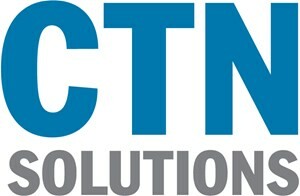Business data is one of the most important assets. Today, there are ways to utilize data to help build a better business. Let’s take a look at the data services that are designed to help the modern business get the most out of this resource.
Before we get into how businesses are changing the way they analyze data, we should talk a little bit about the data. You’ve probably heard about the “big data” trend. This is the active collection of all types of data once reserved for large companies. Recently, as information technology has been implemented, and its price has dropped, small businesses are now beginning to use these systems to improve their businesses.
When we refer to data services, we are referring to business intelligence, business analytics, as well as backup and disaster recovery. These three play varying roles for a business, but can, if leveraged correctly, bring so much value. Let’s look at them individually.
Backup and Disaster Recovery
For the business that wants to build a big data strategy, the protection of the data has to be a priority. In fact, protecting your data should be, no matter how you choose to use data. The backup and disaster recovery (BDR) platform works to back up assigned data regularly to ensure that if there is a need for recovery–from a disaster, a malware attack, or human error–that the files that are recovered are relatively up to date.
The BDR is a network-attached device that takes incremental backups of your data and pushes a copy to a secure offsite data center. This ensures that if your hardware were to fail or your business faces a disaster of some kind, that you still have the data available for recovery. The good news is that a backup and disaster recovery system is a core part of a managed IT services agreement.
Business Intelligence
Using data to maintain, optimize and streamline a business’s operations is called business intelligence (BI). BI supports data-centric planning, and fuels intelligent business decision making. A well-constructed BI program will use data-driven reports and visualization to help increase overall productivity and improve efficiency. BI works by organizing data into summaries in order to give decision makers answers to how the business is functioning and has functioned.
BI also can provide analysis of the financial and operational statistics that work to identify weak and strong areas of a business. This can help business leaders make better-informed decisions backed up by empirical data that is easy to decipher. With the ability to see a whole business and decipher how the current operations can be more effective, decision makers can set goals and strategy.
Business Analytics
Like BI, a business analytics (BA) platform also collects and analyzes data and employs predictive analysis with the core aim of addressing weak points, but those are the only similarities it has with BI. BA software is used to analyze historical and current data to identify the trends in a business.
While BI and BA seem relatively similar on the surface–both feature visual representations as well as customizable queries–the main difference is that BI is crunching data that will help businesses structure operations to meet the demands of today, while BA has a clear intention of helping analysts plan for the future.
If you would like to learn more about using your data to improve your business, while also protecting that data, call the IT professionals at CTN Solutions today at (610) 828- 5500.
